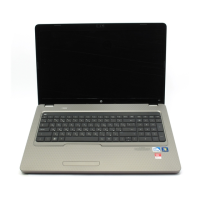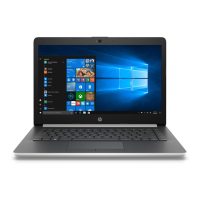Power
Hardware and Software Guide 3–3
About Standby, Hibernation and
Shutdown
This section describes Standby, Hibernation, and shutdown and
explains when to implement them. Standby and Hibernation are
energy-saving features that can be initiated by you or by the
system.
Standby
Standby reduces power to system components that are not in use.
When Standby is initiated, your work is saved in random access
memory (RAM) and the screen is cleared.
Ä
CAUTION: To avoid a complete battery discharge, do not leave your
notebook in Standby for extended periods. Connect to an external
power source if your notebook will be unused for extended periods.
■ Saving your work before initiating Standby is not usually
necessary, but it is a recommended precaution.
■ When the notebook is in Standby, the power/standby
light
blinks.
When you resume from Standby, your work returns to the screen
where you left off.

